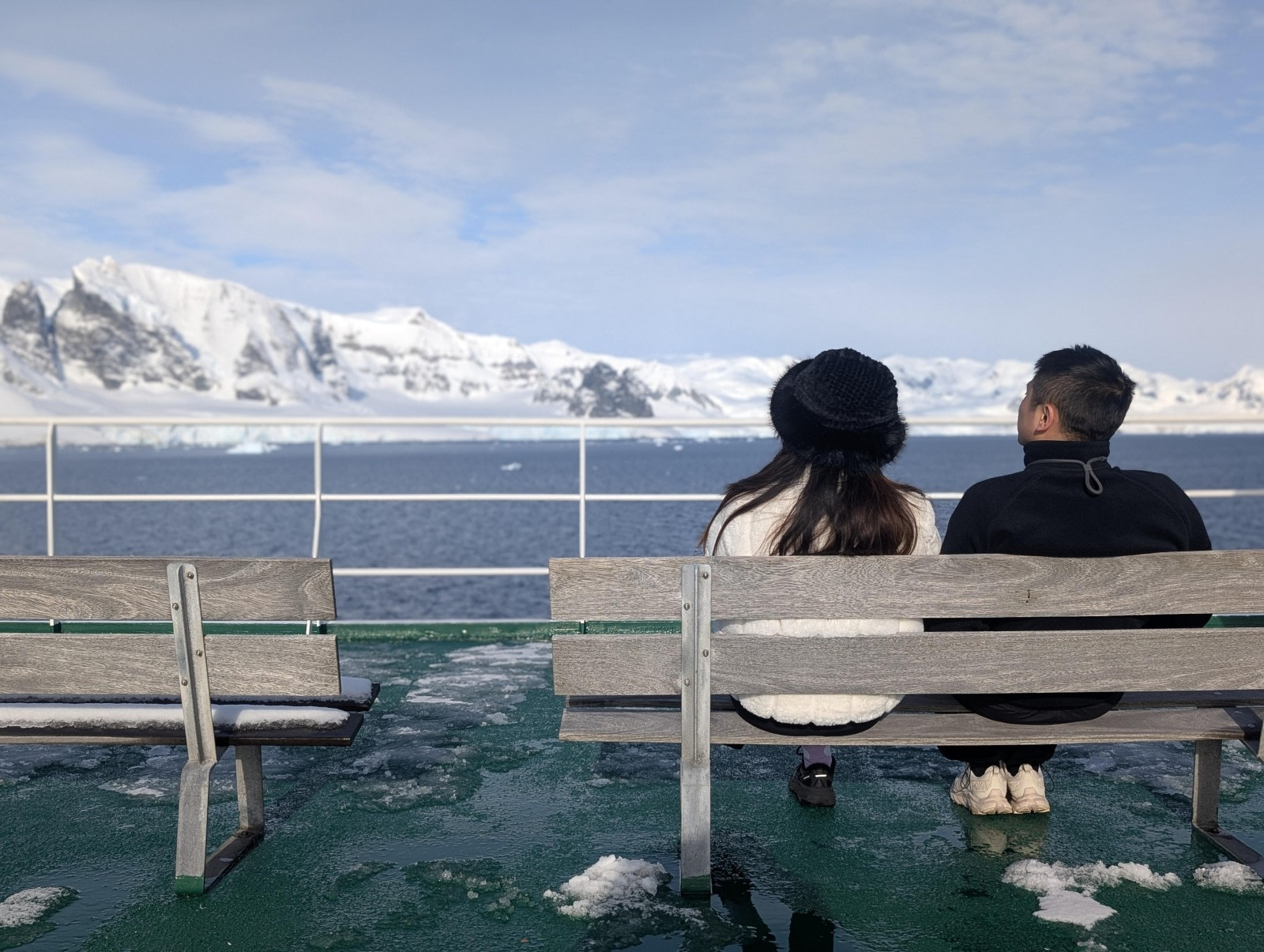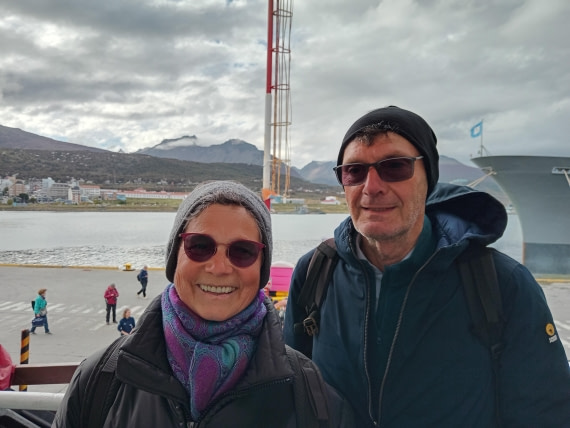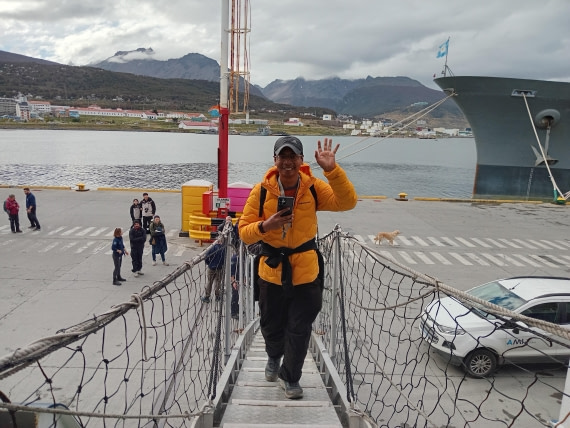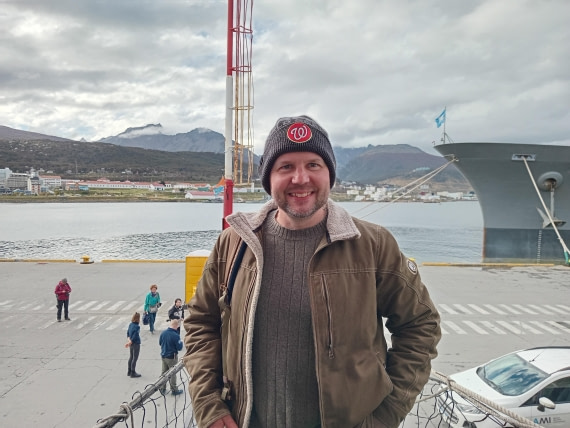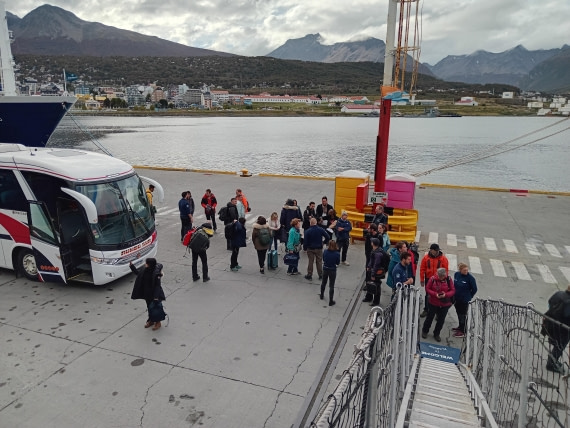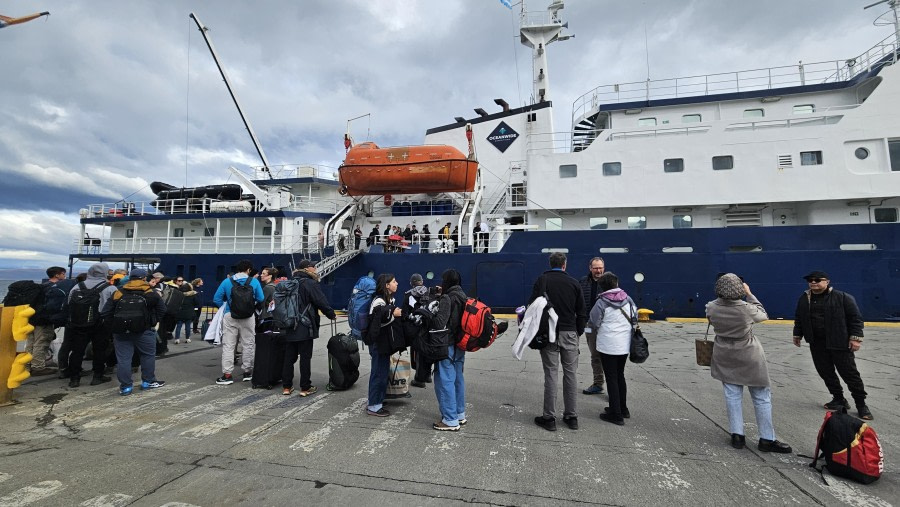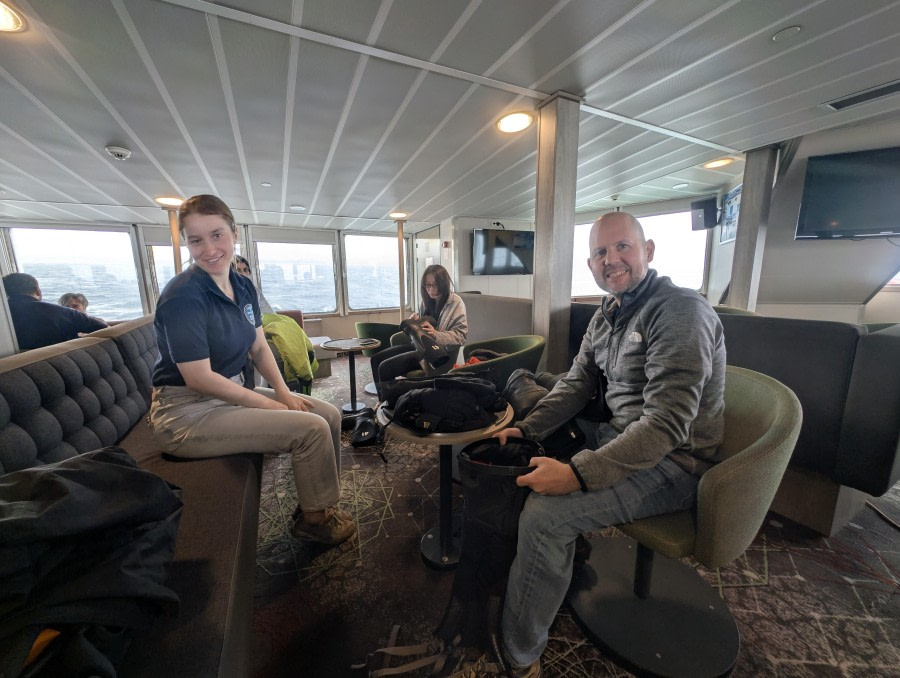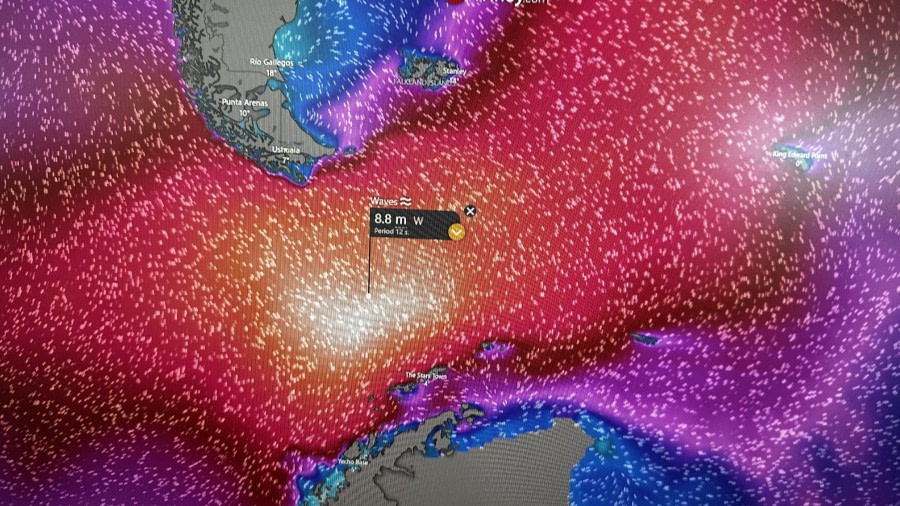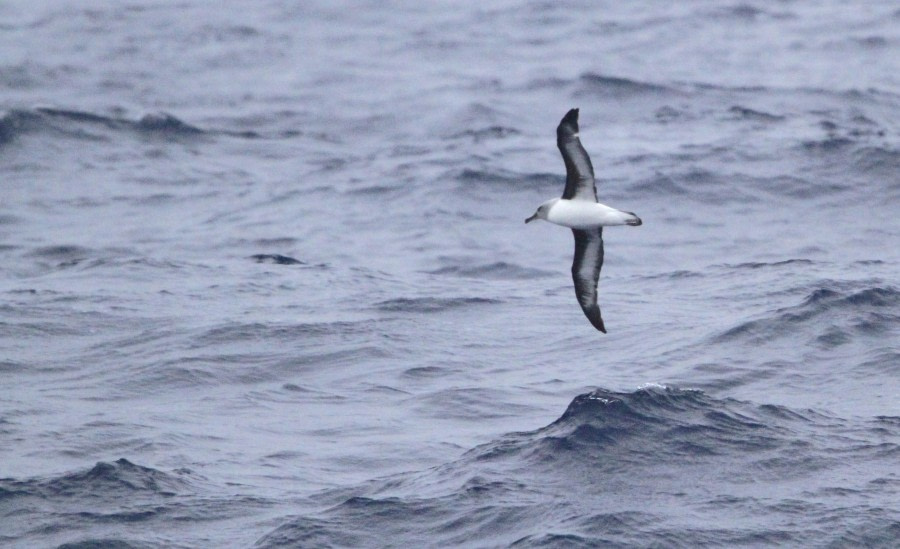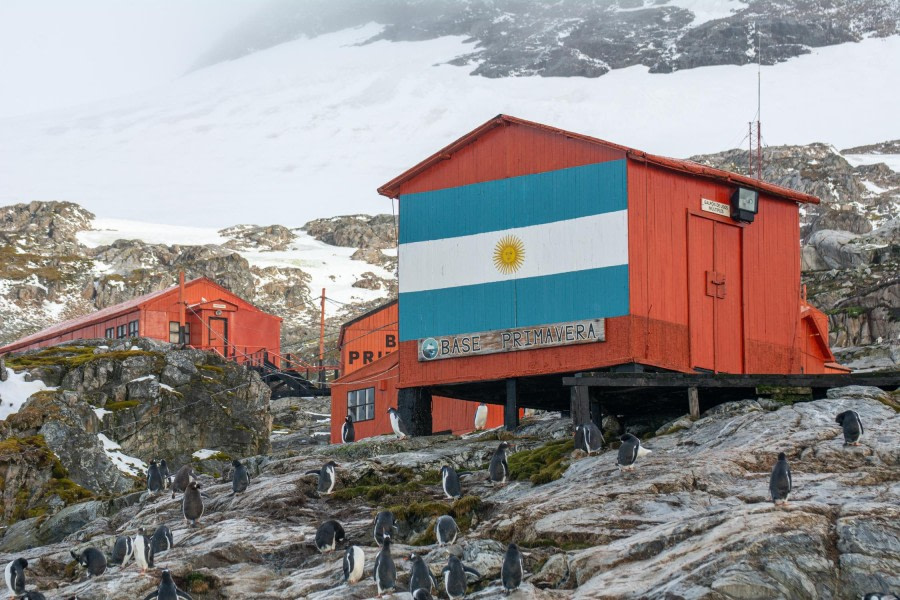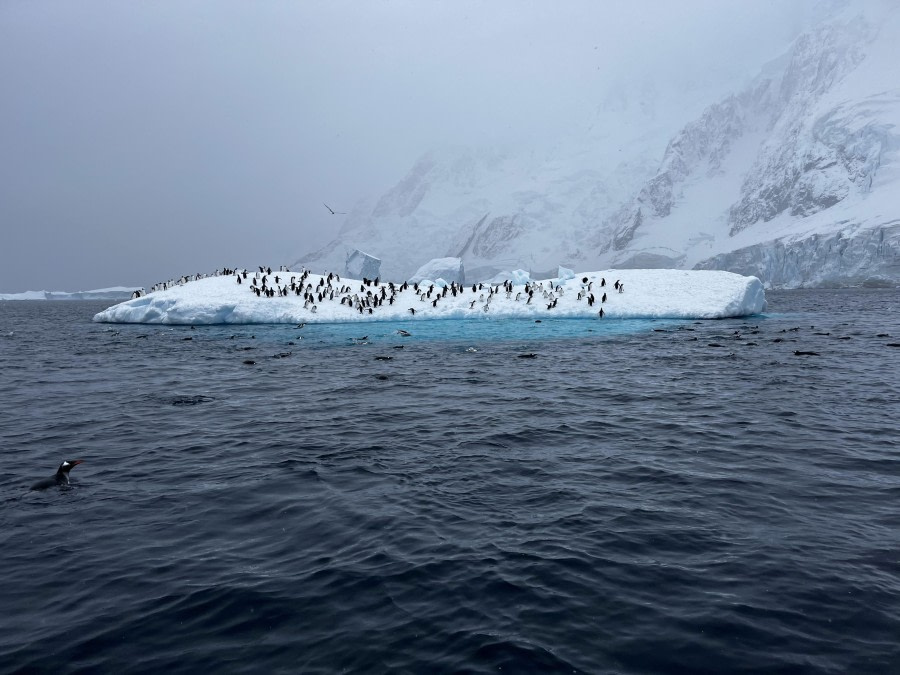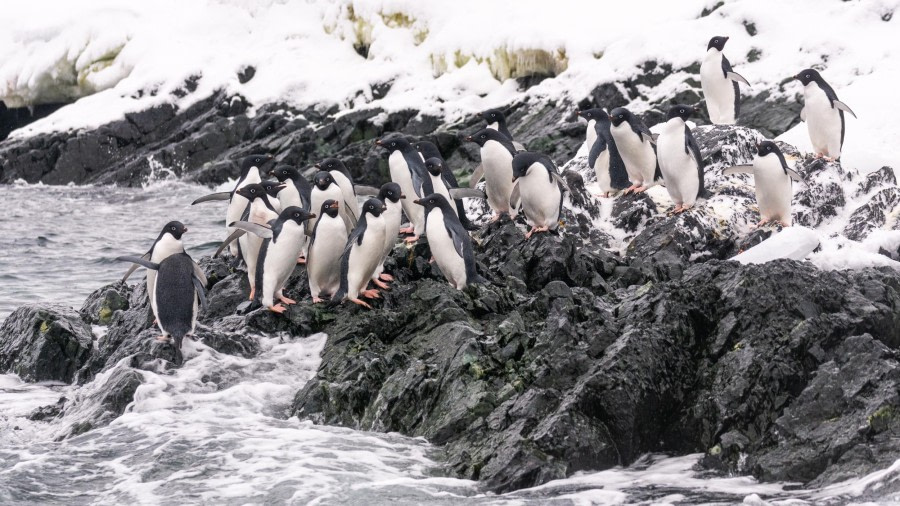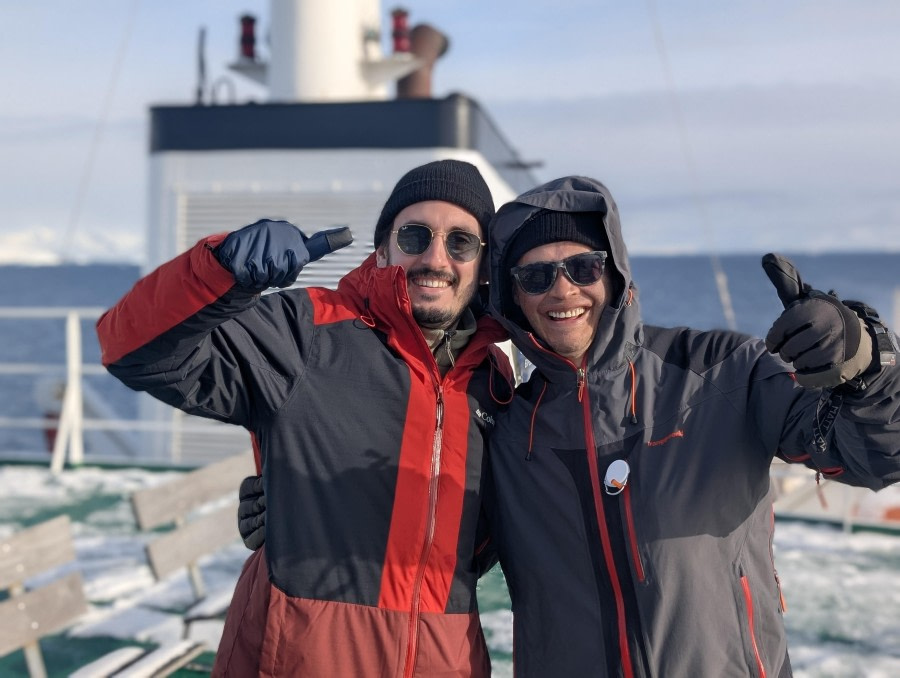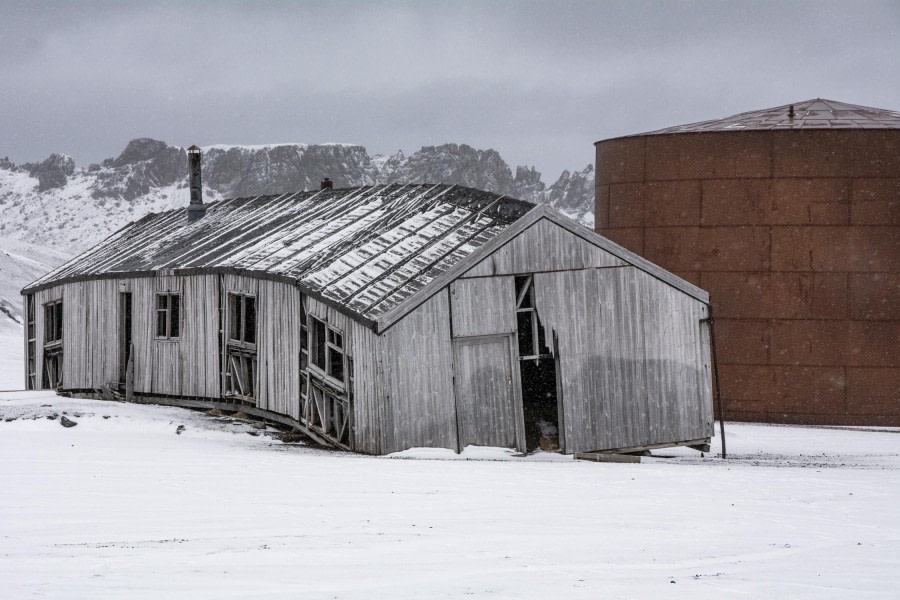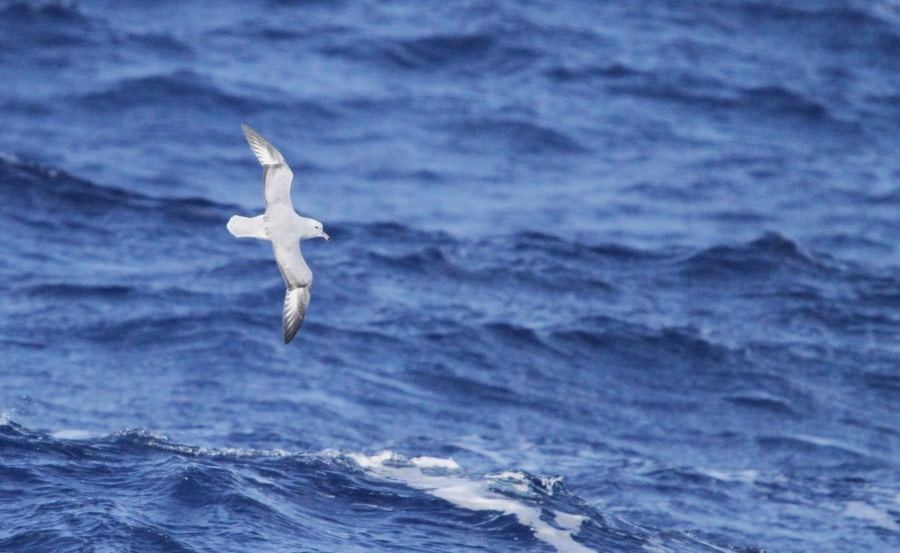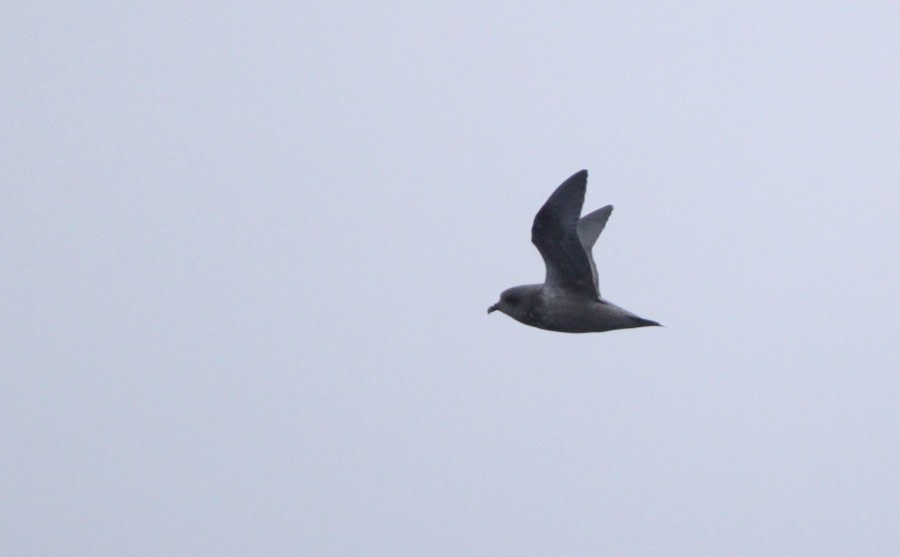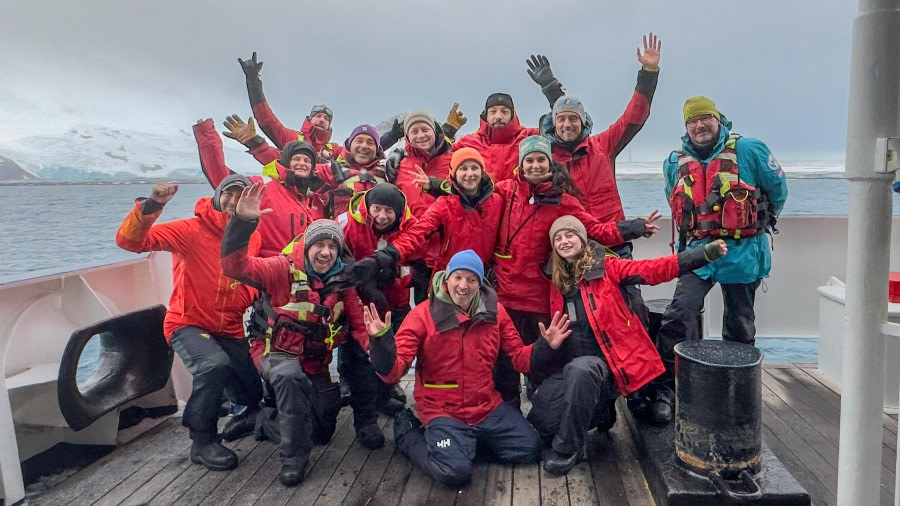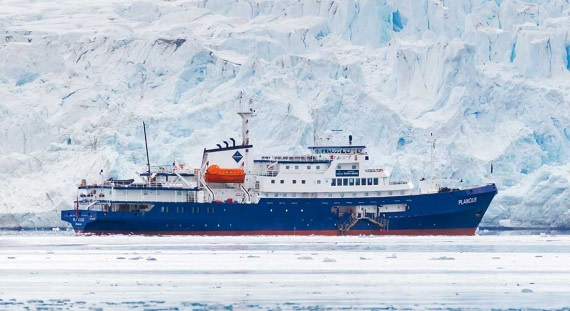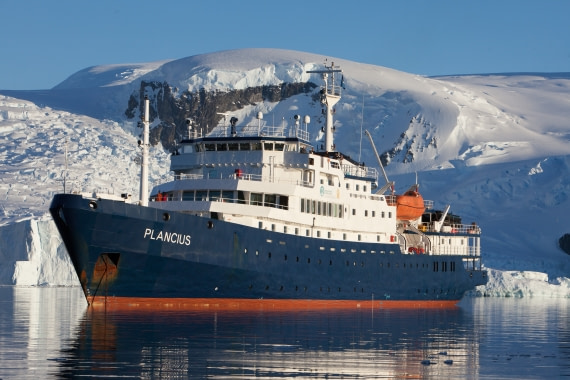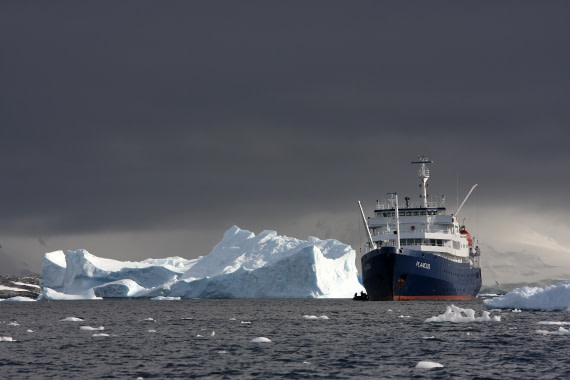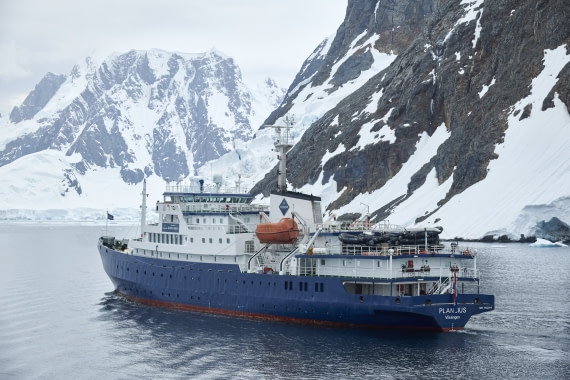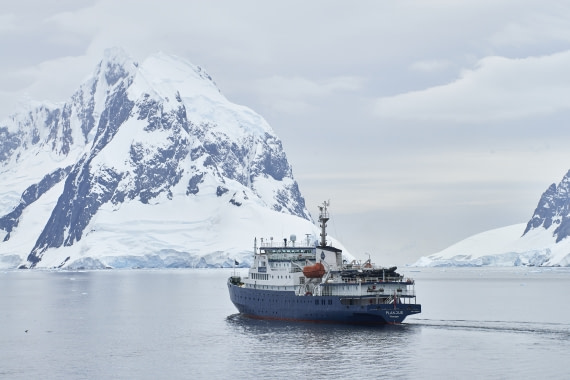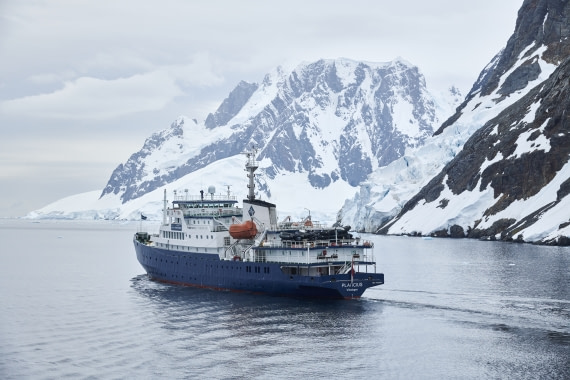| Date: | 23.03.2025 |
| Position: | 54°48.6’S / 068°17.8’W |
| Wind: | WSW6 |
| Weather: | Partly cloudy |
| Air Temperature: | +11 |
The day has finally arrived! Our incredible journey south begins now. In the late afternoon, we make our way to the port, our eyes fixed on the swift silhouette of our ship, Plancius, ready to carry us to the farthest reaches of the world.
After traveling to the ends of the Earth to Ushuaia, the southernmost city, this moment feels surreal. As we step onto the gangway, our cheerful expedition team and lovely crew greeted us, their faces full of enthusiasm and excitement for the adventure ahead. The day wrapped in a soft, cloudy sky, the warmth of the air comforting, the gentle winds whispering of the vast, untouched wilderness to come. The sea was still, reflecting the sky like a perfect mirror. We check in with the hotel team and were escorted to our cabins, our new home for the next twelve days.
We took a moment to explore the ship while the others arrive, feeling the pulse of this grand vessel beneath our feet. Once everyone was on board, we gathered for some essential briefings, including the abandon ship drill, where we mustered at the lifeboats, ready for any situation that might arise. With this important task completed, it was time to return to the lounge, where we were greeted with a glass of bubbly, and Captain Evgeny raised a toast to the voyage ahead.
As the ship began to come alive with the hum of anticipation, our hotel manager Albert introduced the Plancius to us, unveiling the marvels of this mighty ship. Expedition Leader Adam then stepped forward, introducing the expert team who will guide us on this unforgettable journey. Every face was warm and welcoming, and we were instantly enveloped by the camaraderie and spirit of adventure that filled the air.
Finally, time for the last event of the day arrived as we moved to the restaurant, the anticipation palpable, and sat down to a feast, our eyes drawn to the breathtaking views of the Beagle Channel outside. The fading light of day casted a golden glow on the waters, and it was impossible not to feel the weight of history and nature around us. We are on the brink of something extraordinary, and tomorrow promises to be just the beginning of the epic journey ahead.
